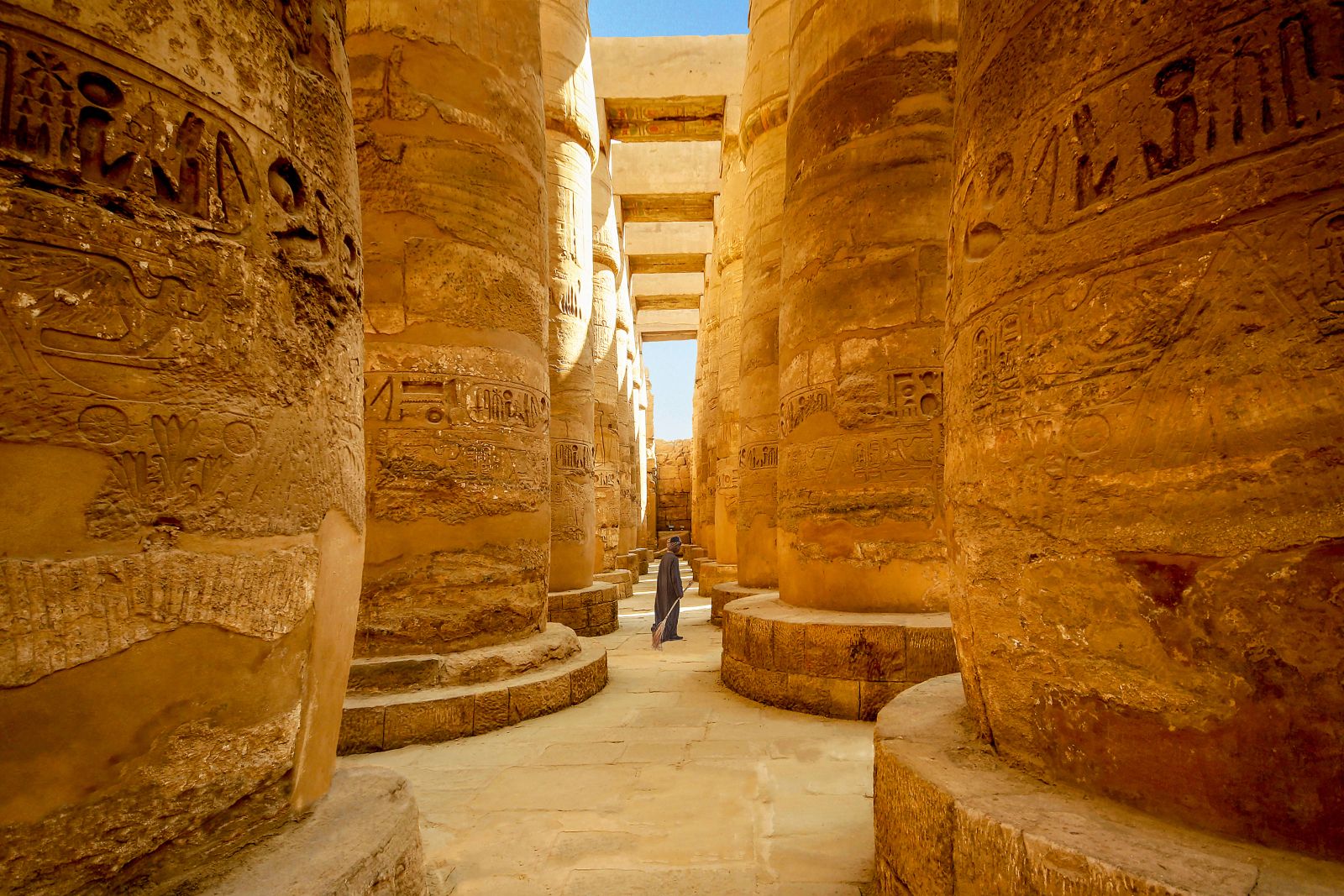Nowhere in the world compares with Egypt for historical sights and stories of the past, but where to head to see the best of the best? From the Great Pyramids at Cairo and the legendary Valley of the Kings and Queens in Luxor to the gentle river life of Aswan, join us on a journey to ancient - and modern day - Egypt.
CAIRO AND THE PYRAMIDS OF GIZA

The largest city in the Arab world with a population of around 21.3 million, sprawling Cairo is the gateway to Egypt. Many travellers stay here while visiting mind-bending UNESCO World Heritage sites such as the Pyramids at Giza (the largest include the Pyramid of Khufu and the Pyramid of Khafre; don’t miss the Great Sphinx of Giza either, a limestone statue of a reclining sphinx) and Saqqara near Memphis. In the city itself, check out the many world-class museums which include the fascinating Museum of Egyptian Antiquities and, opening in November, the Grand Egyptian Museum. Exploring the labyrinthine Khan el-Khalili bazaar in Islamic Cairo, adjacent to the Al-Hussein Mosque, is also a must for a real flavour of the city’s character.
BACK TO TOP
LUXOR

Often referred to as the world’s largest open-air museum, Luxor is an awe-inspiring legacy to the Ancient Egyptians. The best places to visit in Luxor include the Temples of Karnak (the largest and most important religious complex of the time) and Luxor on the East Bank; the Valley of the Kings and Queens, and the Temple of Hatshepsut (the greatest female Pharaoh of ancient Egypt) and Colossi of Memnon on the West Bank. A range of places to stay can be found in and around Luxor. Perhaps the best known is the Sofitel Winter Palace, located next to the Karnak Temple. A true heritage gem – and previously the winter retreat for the royal family – this is where Howard Carter pinned his updates about his discoveries on the noticeboard. For intimate, boutique charm and the warmest of welcomes, we favour the Al Moudira hotel – a serene and characterful hideaway located across the water from Luxor close to the Valley of the Kings. Luxor is also one of the main places to embark and disembark for Nile journeys.
BACK TO TOP
ABU SIMBEL

Two huge rock-cut temples in the Nubian Valley dating back to 1264BC – the Great Temple of Ramesses II and the Small Temple of Hathor and Nefertari – Abu Simbel is an imposing sight to behold. Outside, there are four colossal statues of Ramesses (who built both temples); inside hieroglyphs decorate the walls, depicting his victorious battles. Adding a twist to the tale of this impressive complex is the fact that it was disassembled and moved in the 1960s, during the construction of the Aswan High Dam, to 60m higher than its original position to save it from the rising Nile. The best time to visit Abu Simbel is early in the morning from Aswan.
BACK TO TOP
NILE RIVER

Africa’s longest river, the Nile, is quite literally the life source for Egypt (it provides nutrient-rich silt to the crop-growing plains on either side during the annual floods). And a Nile River cruise is one of life’s epic journeys. Common routes run from Luxor to Aswan taking in some of the country’s most famous temples along the way, including the well-preserved Temple of Edfu, dedicated to the falcon god Horus, and the Temple of Kom Ombo, an unusual double temple dedicated to Haroeris and Sobel (the crocodile god). Some of the best river boats to sail the Nile are the sleek Oberoi Zahra and Sonesta St George (both have an onboard spa and a pool); alternatively opt for a dahabiya, a smaller, charming sailboat that can reach some of the lesser visited parts of the river such as the Temple of Horemheb at Gebel Silsila.
BACK TO TOP
ASWAN

Seen as the southern frontier of the Egyptian civilisation, Aswan sits on one of the prettiest stretches of the Nile River where the water is dotted with small islands and feluccas (the traditional Egyptian wooden boats) whose white sails flutter gently in the breeze. Places of interest include the Nubian village and the Tomb of the Aga Khan who died in 1957 (the elegant pink granite structure was inspired by the Fatimad tombs in Cairo). History buffs may also be interested in the Temple of Isis on the island of Philae, built to honour the eponymous goddess and the centre of the cult of Isis until at least AD550. It is the last of the ancient Egyptian temples and the walls are covered in hieroglyphs. The best place to stay is The Sofitel Legend Old Cataract Hotel, on the banks of the Nile, which has hosted dignitaries, royalty, prime ministers and writers (it inspired Agatha Christie’s Death on the Nile). Its gourmet French 1902 Restaurant is especially wonderful.
BACK TO TOP












